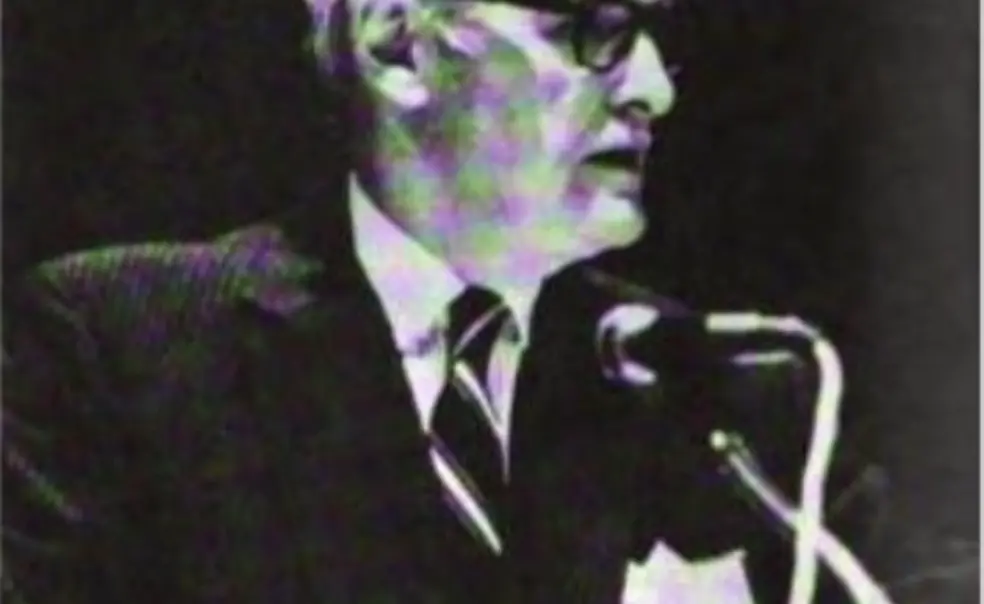George F. Kennan ’25: 1976 Woodrow Wilson Prize Winner
George F. Kennan ’25 has divided the half-century since his graduation from Princeton almost equally between statesmanship and scholarship. In awarding him this year’s Woodrow Wilson Prize, the university’s highest tribute to an alumnus who has distinguished himself “in the nation’s service,” his alma mater was clearly honoring both the statesman and the scholar. “Through his remarkably productive and diversified life, George Kennan has studied, interpreted, formulated, and executed American policy in such a way as to merit our gratitude and our respect,” said R. Manning Brown Jr. ’36, chairman of the trustee’s Executive Committee, in making the presentation on Alumni Day.
The policy for which Kennan is most famous, of course, is “containment.” Not only was he the Mr. “X” who authored the July 1947 Foreign Affairs article that set forth the doctrine of resisting Soviet expansionism, he also headed the State Department planning staff that charted this major turn in America’s postwar dealings with the U.S.S.R. Yet a decade later he was to find himself arguing against the continuation of his own program after concluding it had outlived its usefulness. His 1957 proposal for “disengagement” – presented in a lecture series broadcast by the BBC – aroused considerable debate throughout the Western world. Today it may be seen as one of the first steps toward the policy that has come to be called détente. Appropriately, Kennan was the keynote speaker at a Princeton University Conference on that topic last month (see following story).
Kennan’s Foreign Service career began the year after he left Princeton. By 1929, he had been third secretary in Riga (Latvia), Kaunas (Lithuania), and Tallin (Estonia) – cities regarded as “listening posts” to the Soviet Union, where the U.S. then had no diplomatic mission. During the following two years, he participated in a special State Department program in Russian studies in Berlin, preparing for the anticipated establishment of relations with the U.S.S.R. When Ambassador William C. Bullitt went to reopen the American Embassy in Moscow in 1933, Kennan accompanied him and served as his right-hand man.
Kennan was U.S. Consul in Prague when the Germans seized Czechoslovakia and first secretary in Berlin when the U.S. entered World War II. After being released from six months’ internment by Hitler, he became counselor for the American delegation to the European Advisory Commission. In 1944 he returned to Moscow, where he was minister during two years of particularly difficult dealings with Stalin.
Although Kennan was already one of the West’s leading experts on the Soviet Union, what he himself considers his most important contribution was his role in the development of the Marshall Plan to aid Western Europe’s economic recovery after the war. For a while he was a principal adviser to Secretary of State Dean Acheson and then, in 1952, he was named Ambassador to Moscow. He remained there only a few months, however, before the Soviets declared him persona non grata – ostensibly because of critical remarks he made during a visit to Berlin about the Kremlin’s treatment of Western diplomats.
Upon retiring from the Foreign Service in 1953, Kennan joined the Institute for Advanced Study in Princeton – except for three years as Ambassador to Yugoslavia – devoted himself full-time to his second career as scholar. He soon became, as Princeton politics professor Robert C. Tucker noted in introducing Kennan at last months’ détente conference, “the most distinguished Russianist of this generation in the United States…because of the extraordinary intellectual leadership and creativity that has enable him really to be the founder of the academic discipline of Russian studies as it has developed in the last 30 years.”
Tucker cited four tenets embodied in Kennan’s work which he felt were especially relevant to the current discussion of détente:
(1) In analyzing Soviet affairs, “you must think in historical terms.” Détente, for example, “has become a catch-word of the 1970s,” but it should be viewed against the history of at least four previous periods of increased cooperation. The first was in 1933-34, when official relations were established; the second in 1941-44, during the wartime alliance; the third in the mid-’50s, with Khrushchev’s ascent to power; and the fourth (really a resumption of the third) in the early ’60s, during the Kennedy Administration.
(2) The foreign policy of the U.S.S.R is inseparably connected with its internal affairs.
(3) Though the significance and function of Soviet ideology cannot be ignored, its relationship to the actual policies pursued is extremely complex. “One must try to avoid falling into the trap of thinking the policy is simply an enactment of ideology by a fanatical government,” Tucker warned.
(4) In Soviet policy, the importance of the leader and his personality at any particular time cannot be overemphasized. In this regard, Tucker said, “Kennan has contributed a great deal to our deeper understanding of Stalin and Stalinism.”
Kennan’s contributions, developed in numerous books and articles, have twice brought him the Pulitzer Prize and the National Book Award, as well as the Bancroft and Francis Parkman prizes and the Freedom House award. He has received honorary degrees from Princeton (which he served as an alumni trustee in 1951-55), Oxford, Yale, Harvard, and many other universities. Most recently, he was appointed to the Smithsonian Institution’s Woodrow Wilson Center of International Scholars.
In accepting the Wilson Prize, Kennan said, “I am very moved and pleased to receive this award because I think it refects also some appreciation to the American Foreign Service…a service which I think is the most dedicated, the most self-effacing, and the most unappreciated of all the bodies of public servants.”
This was originally published in the March 8, 1976 issue of PAW.












No responses yet